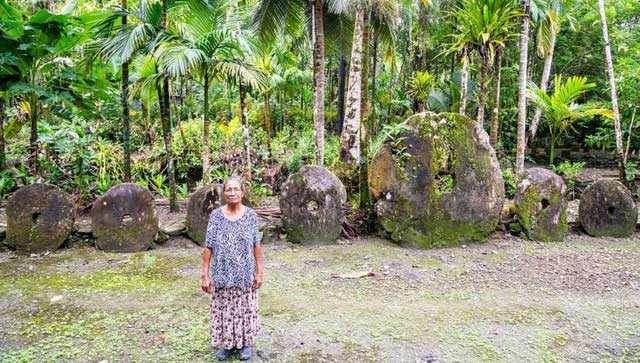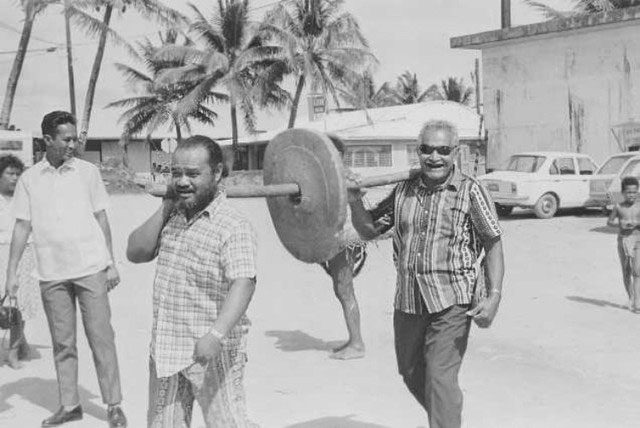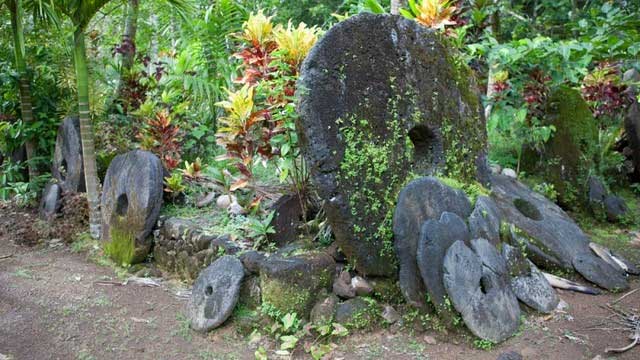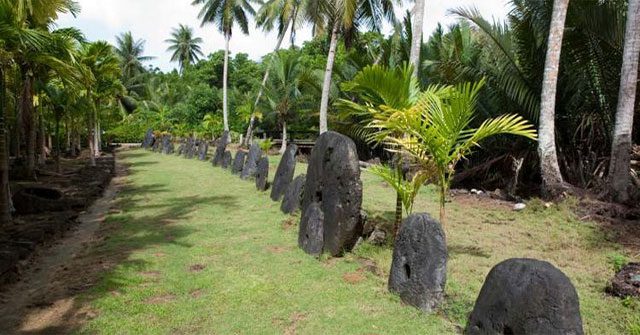Yap, also known locally as Wa’ab, is an island in the Caroline Islands of the western Pacific Ocean.
Although the residents of Yap currently use the US dollar as their official currency, there was a time when transactions on the island were conducted using giant stone coins.
In fact, these giant stone coins, known as “rai”, are still used as a medium of exchange. While various economic factors determine the value of modern currencies, a shared belief system determines the value of rai coins, passed down through generations.

These are large, disc-shaped limestone stones that can be carved. They are used as the primary currency on Yap Island, home to several indigenous tribes. The stones have different values not based on their size but on their history. For example, if many people died during the transportation of a stone, its value increases.
Traditional Yap Coins Come in Various Sizes
The early rai coins were whale-shaped, leading to the limestone discs being named “rai,” meaning “whale” in the local language.
A typical coin is carved from limestone into a flat disc with diameters ranging from 7 cm to 3.6 meters, with larger coins weighing up to 5,000 kg. These heavy coins were transported to Yap from Palau by boring a hole in the center. A sturdy pole is then inserted through this hole, allowing men to lift and carry it.

The giant stone discs known as rai have been used by the people of Yap Island as a symbolic form of currency for hundreds of years and are sometimes still used today for traditional or ceremonial purposes.
Since there are no assets like gold and silver to back this currency, the value of the rai coins is very flexible within Yap’s monetary system. Although size and decoration help determine value to some extent, the true value lies in the history passed down through generations, such as: Who owns the coin, what it was used for, how difficult it was to quarry the limestone, and how many lives were lost to obtain the stone are all key factors in determining the coin’s value.
While the origin of this currency is unclear, archaeologists have discovered flat stones dating back up to 2,000 years on the island. Although rai stones were replaced by modern money in the early 20th century, they remain a medium of exchange for special transactions. These transactions often have social or customary significance, such as settling dowries or establishing political agreements.

Archaeologist Scott Fitzpatrick from the University of Oregon stated: “They are among the most fascinating currencies in the world. Carved from limestone quarries located in the Palau Islands approximately 250 miles (400 km) from Yap, they are the largest objects ever moved across the Pacific prior to European contact.”
Rai is Quarried on Neighboring Islands and Brought to Yap by Boat
Yap Island is one of the 2,100 islands that make up the independent nation of Micronesia. Due to the island’s lack of precious metals and durable stones, its inhabitants sought out nearby islands to quarry resources and discovered limestone.
They began extracting limestone primarily from Palau, an island located 400 km to the southwest. Because limestone is very rare for the people of Yap, it became valuable to them. Village chiefs would send people on bamboo rafts and boats to Palau to work in the quarries and bring back limestone discs. Initially, these coins were small, but they grew larger over time due to advancements in tools and techniques.
When the coins were brought to Yap, the chiefs assigned value to them based on the previously used pearl shell currency. These coins were then circulated after the chiefs kept the larger coins and two-fifths of the smaller coins for themselves.

In a recent study by Fitzpatrick and co-author Stephen McKeon, they stated that rai stone money is extremely valuable, but due to its size, weight, and fragility, it is rarely moved around the island.
Giant Rai Coins Are Publicly Displayed
Because moving large sums of money in each transaction is impractical, ownership is transferred through oral tradition. Everyone in each village knows which stone belongs to whom. Since ownership does not equate to possession, the theft of giant rai coins is virtually nonexistent.
As a result, these giant rai stones are often scattered in public places throughout the island. In fact, each village has its own designated space to display the enormous coins, which are too heavy to be moved.


















































